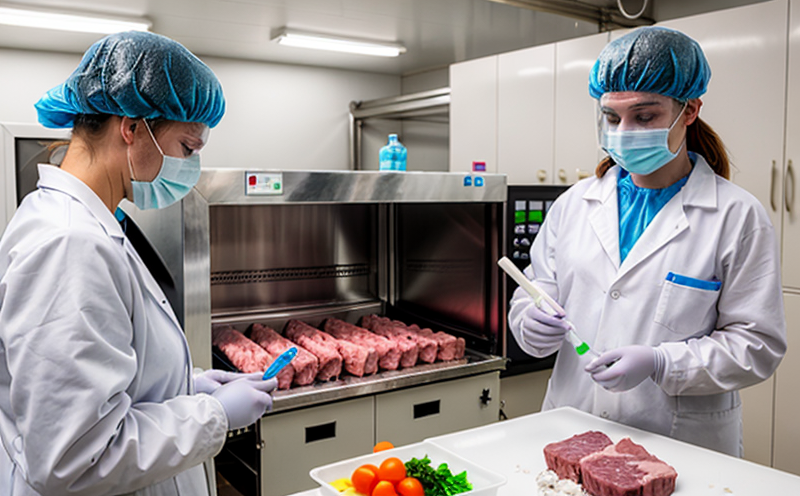FDA BAM Chapter 6 E. coli Detection in Dairy and Meat
The FDA Bacteriological Analytical Manual (BAM) Chapter 6 provides a standardized method for detecting Escherichia coli O157:H7 in dairy products and meat, which is essential to ensure compliance with regulatory standards. This service employs rigorous analytical techniques that align with the stringent requirements of the FDA BAM Chapter 6.
The detection process begins with precise sampling, where we adhere strictly to the guidelines laid out by the FDA for both dairy and meat samples. Proper aseptic technique is employed during sample collection to prevent contamination, ensuring accurate results. Once collected, these samples are transported in controlled conditions to our laboratory, where they undergo detailed preliminary examination.
The E. coli detection process involves several key steps:
- Preliminary examination of the raw materials and finished products,
- Isolation and culture of suspected colonies on selective media,
- Confirmation of E. coli using biochemical tests, and finally,
- Differentiation between E. coli O157:H7 and other serotypes.
The significance of this service extends beyond mere compliance; it plays a crucial role in safeguarding public health by identifying potential sources of contamination early on. This proactive approach not only helps manufacturers maintain their reputation but also ensures that consumers can trust the products they purchase.
Our laboratory is equipped with state-of-the-art facilities and experienced personnel who are well-versed in performing these tests according to FDA BAM Chapter 6 standards. By leveraging advanced technology and adhering strictly to protocol, we ensure that our clients receive accurate results every time. This level of precision is vital for maintaining the integrity of dairy products and meat, which form an essential part of many diets.
In summary, our FDA BAM Chapter 6 E. coli detection service offers a comprehensive approach to detecting E. coli in dairy and meat products, ensuring that all necessary steps are followed meticulously. This commitment to quality and accuracy ensures that the end product meets both regulatory requirements and consumer expectations.
Scope and Methodology
| Step | Description | Relevant Standard |
|---|---|---|
| Preliminary Examination | Sample collection, transport, and preliminary examination to identify potential contaminants. | FDA BAM Chapter 6 |
| Isolation on Selective Media | Culture suspected colonies on selective media for further analysis. | FDA BAM Chapter 6 |
| Confirmation of E. coli | Perform biochemical tests to confirm the presence of E. coli. | FDA BAM Chapter 6 |
| Differentiation between Serotypes | Distinguish between different serotypes of E. coli, including O157:H7. | FDA BAM Chapter 6 |
Our methodology is designed to be as efficient and accurate as possible, ensuring that each step contributes significantly to the overall quality assurance process. By adhering strictly to FDA BAM Chapter 6 guidelines, we provide a reliable service that meets all regulatory requirements.
Benefits
The benefits of our FDA BAM Chapter 6 E. coli detection service are multifaceted and extend across various stakeholders:
- Quality Assurance: Ensures that dairy products and meat meet the highest standards of safety.
- Regulatory Compliance: Helps manufacturers comply with stringent FDA requirements, reducing the risk of non-compliance penalties.
- Patient Safety: Protects public health by identifying potential sources of contamination early on.
- Brand Reputation: Maintains and enhances brand reputation through consistent adherence to quality standards.
- Cost Savings: Minimizes the risk of costly recalls and product withdrawals due to contamination issues.
In essence, this service not only fulfills regulatory obligations but also contributes to a safer food supply chain. By providing accurate and reliable test results, we enable our clients to make informed decisions that safeguard both public health and business interests.





